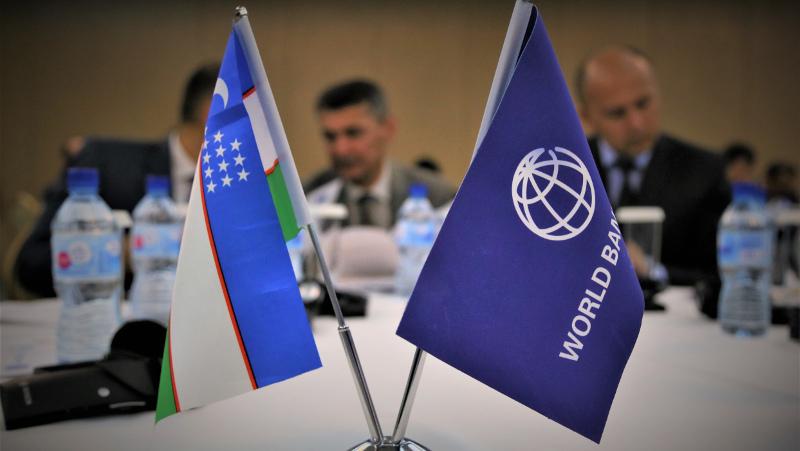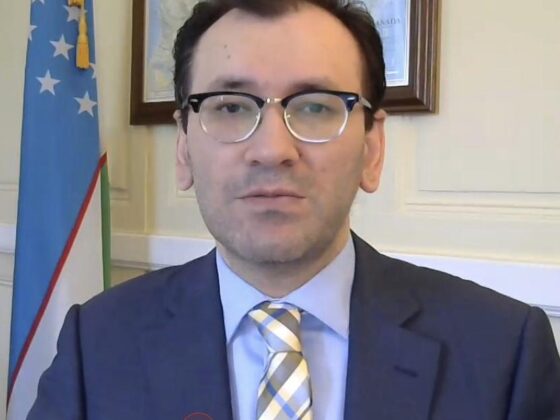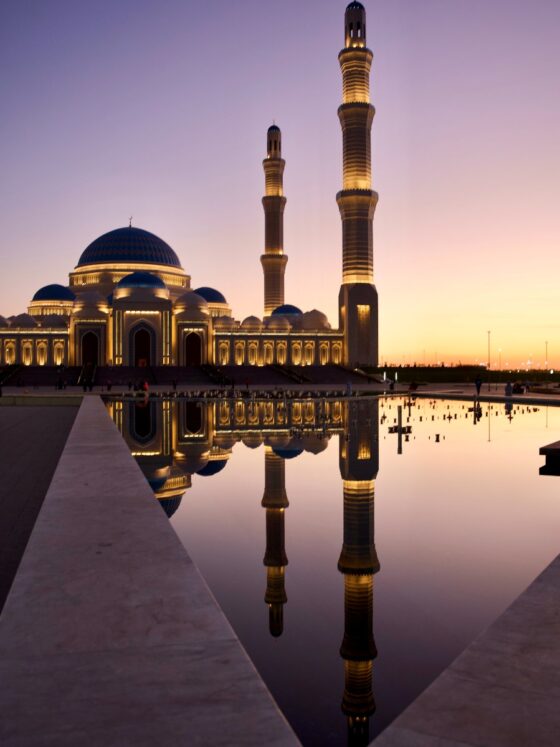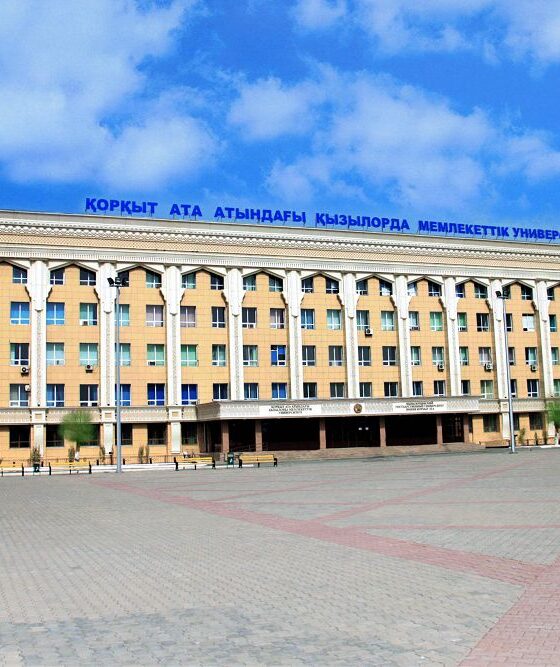
By Davide Cancarini
Davide Cancarini is an independent researcher and freelance journalist based in Milan. He holds a PhD in Institutions and Policies from the Università Cattolica del Sacro Cuore in Milan and has worked extensively on Central Asian affairs. His articles/research have been published in various outlets such as Limes – Italian Journal of Geopolitics, EastWest, and think tanks, including IAI – Institute for International Affairs (Rome), ISPI – Italian Institute for International Political Studies (Milan) and The Foreign Policy Centre (London).
The spread of the COVID-19 virus sparked a global race to send aid abroad and to communicate this effort widely—a phenomenon called “mask diplomacy” by many media commentators. China, in addition to being the first country in which the virus spread, has also been at the forefront in terms of propaganda, aiming to appear as a global leader concerned with international well-being. But China has not been the only country to use the pandemic as a tool of political communication: in Central Asia, Uzbekistan stands out for its advanced COVID-19 communication strategy.
“Modernizing Authoritarianism”
Uzbekistan’s COVID-19 communication strategy is part of what I define as “modernizing authoritarianism.” In the Central Asian context, the term is often associated with Kazakhstan, but since Savkat Mirziyoyev’s rise to power, it has also become applicable to Uzbekistan. In a few words, the concept of “modernizing authoritarianism” involves developing a range of innovations, very often related to the economic dimension and sometimes with a clearly defined time horizon, in a context wherein an authoritarian management of power is maintained.[1]
Since coming to power, Mirziyoyev has fostered many political and economic changes, both formal and substantial. Although his ultimate goal is to maintain internal stability, an objective shared with his predecessor Islam Karimov, the path he has taken is very different, giving preference to economic and commercial liberalization, and terminating regional isolationism. This dynamic of controlled openings that are limited to certain dimensions, defined as “modernizing authoritarianism,” is similar to the trend witnessed in Kazakhstan since independence. These efforts to open up the economy, strengthen regional connectivity, and attract foreign investments have been accompanied by a parallel commitment to communicate better with domestic audience and the international community. The objective is twofold. On the domestic front, the aim is to ensure that Uzbek citizens embrace economic modernization while at the same time agreeing to postpone demands for greater social and political openness. On the external front, the goal is to persuade international public opinion (and especially investors) that Uzbekistan has changed profoundly, and that the system is significantly more open than it was in the first 25 years after independence.[2]
Uzbekistan and COVID-19
The first cases of COVID-19 were confirmed in Uzbekistan in mid-March and, as of July 9, the government had officially confirmed 11,447 cases and 49 deaths (even if there are doubts about the real figures, as described below). The impact of the pandemic on the economic sphere is expected to be important: the country’s growth will fall around 1.6% in 2020, against a pre-crisis outlook of +5.7%.
On the internal front, from the very first moment (mid-March), the authorities acted promptly, introducing tight lockdown and prevention measures. This contributed to containing the spread of the pandemic in the country but, after a partial reopening, on July 8 the authorities were forced to introduce a new three-week lockdown—until the beginning of August—after a surge in cases of transmission.
In parallel with the measures adopted domestically, in the first weeks of the pandemic, Mirziyoyev was very active on the international front as well. First of all, he asked international institutions for help, receiving much positive feedback: from the Executive Board of the International Monetary Fund, which approved a disbursement of US$375 million to sustain Uzbekistan’s response to the pandemic; the World Bank, which approved a US$95 million financing package to support the country’s immediate response to the impacts of COVID-19; and the Asian Development Bank, which announced a US$1.26 million grant to Uzbekistan for medical equipment and supplies.
Secondly, Tashkent has been very active towards its regional neighbors, although not exclusively. Since the global spread of the virus, Uzbekistan has provided humanitarian support (in the form of medical or food aid) to the following countries (in alphabetical order): Afghanistan, Azerbaijan, Belarus, China, Hungary (through the Turkic Council), Iran, Kazakhstan, Kyrgyzstan, Russia, and Tajikistan. Particularly noticeable is the case of Tajikistan: in fact, Tashkent has become the largest donor of humanitarian aid to Dushanbe in the fight against COVID-19, providing about $2.5 million since the pandemic began in January. Tajikistan then “returned the favor” after the partial destruction of the Uzbek Sardoba Dam occurred in the Syrdarya region on May 1, sending construction materials. The “mask diplomacy” involved Uzbekistan in the opposite direction, as well. Tashkent has, in fact, received support in the fight against COVID-19 from the following entities (in alphabetical order): China, the European Union, Japan, South Korea, Turkey, the United Arab Emirates, and the US. Furthermore, Uzbekistan sent a group of doctors to Italy—one of the most affected countries globally—to gather information on how to deal with the virus.
Uzbek activism has been even more evident when it is compared to Kazakhstan, by far the largest economy in Central Asia. Nur-Sultan sent aid only to China, Kyrgyzstan, and Tajikistan. It is necessary to point out that Kazakhstan, which has about 18 million inhabitants compared to over 32 million in Uzbekistan, was also the most affected country in Central Asia, with official numbers listing over 51,000 cases and 264 deaths as of July 9. But even considering the contrast between the two countries in terms of official measures of contagion, the difference between their responses to the crisis is clear.
Phone and Social Media Diplomacy
Mirziyoyev, who has pushed for a common response to COVID-19 in Central Asia, has been particularly active in talks with regional and non-regional leaders. Looking at the official Twitter profile of the President’s Press Service, from March 16 to early June, Mirziyoyev had 25 telephone conversations with regional and international leaders such as Vladimir Putin, Xi Jinping, and the President of the European Council, Charles Michel. The majority of these calls (17 out of 25) were to regional leaders. This may seem trivial, but it is not when viewed in the context of a region where mutual distrust and intra-regional tensions have for long periods directed relations between the five Central Asian states. As mentioned, this attention to the Central Asian dimension is part of Mirziyoyev’s clear strategy of placing Uzbekistan as a regional leader, a dynamic that the COVID-19 crisis has deepened from a communication point of view as well.
Mirziyoyev’s official Press Service Twitter profile is one of the most important tools through which the Uzbek President shares information globally about his activity. Occurring only in English, the communication channeled through social media is mainly directed towards an international audience. The graphic style adopted is characteristic, and the pictures posted always refer to a clear PR objective: i.e., showing a leader capable of managing both international and local issues and of understanding the needs of ordinary people. The communication initiatives are, on every occasion, very timely, as in the case of the clashes that took place at the beginning of June between Uzbek and Kyrgyz citizens in a disputed border area. The same day, the official Twitter profile published a post about the phone call between Mirziyoyev and the Kyrgyz president Sooronbay Jeenbekov in which the incident was discussed. The same can be said regarding the partial collapse of the Sardoba Dam. In the first three days after the disaster, nine posts were published on the Mirziyoyev’s Twitter profile to show the President’s willingness to act as quickly and transparently as possible while dealing with the matter.
To compare, one can mention for instance the denial strategy adopted by Berdimuhamedov in Turkmenistan after the storm and the heavy rains which hit the Lebap region between late April and early May. In fact, in the days immediately following the disaster, Turkmenistan’s state television channels did not even mention what had happened. Later, on June 7, Berdimuhamedov visited the region without mentioning the damages caused by the bad weather. Turkmen state television, one of the cornerstones on which the Arkadag’s propaganda is built, obviously gave great emphasis to the visit without referring to the disaster.
With respect to the communication dimension, the strategy put in place by Mirziyoyev—based on transparency, timeliness, and clarity—is an innovation not only vis-à-vis some of its regional neighbors, but also considering what happened in the first 25 years after the country’s independence.
Legitimize “Modernizing Authoritarianism”
More specifically, regarding the COVID-19 pandemic, during the still-ongoing crisis, Mirziyoyev and his entourage have paid great attention to communication activities related to the aid sent abroad and the dialogues held with regional and international leaders by the President. These two aspects could be considered as a new step in the path taken by Mirziyoyev to consolidate the model of “modernizing authoritarianism” that characterizes his management of power.
This is confirmed, in the negative, by looking at the domestic sphere. In general, in the “modernizing authoritarianism” model, economic dynamism is associated with the maintenance of political closeness. But in the case of the pandemic, soft power and transparency towards the outside world have been so far associated with internal opacity. Indeed, on the domestic front, not everything has been as transparent, especially regarding the figures on internal contagion. Despite the readiness of Uzbek authorities to introduce lockdown measures, the reporting of far fewer cases than in Kazakhstan and a suspiciously rapid trend towards normalization have contributed to rising doubts and uncertainties that not even the national media outlets have helped solve. The spread of suspicion about a manipulated management of the pandemic has also led important officials, such as the Director of the Institute of Virology Erkin Musabayev, to deny rumors.
The more general path undertaken by the Uzbek leadership in its internal/external management of power seems confirmed from a propaganda/communication point of view during the pandemic. As mentioned above, Mirziyoyev’s objective appears to be twofold: to emerge as a reliable leader open to international cooperation while at the same time maintaining strong control over the internal sphere in order to avoid any potential risk of destabilization.
As in the case of the more general features of the model of “modernizing authoritarianism” that Mirziyoyev is implementing in Uzbekistan, from the point of view of communication, there are some serious risks. Regarding the broader political management, the main threat is that Uzbek citizens, although welcoming economic openings, will start to demand tangible openings in the political realm, too. That is what has happened in Kazakhstan starting from Nazarbayev’s resignation and Tokayev’s appointment in the spring of 2019.[3] Regarding communication, if the pandemic crisis were to worsen again, the lack of transparency displayed so far with contagion numbers could make the discrepancy between national and international communication strategies even more visible. In this latter worst-case scenario, even the great attention paid by Uzbekistan’s officials to external powers’ perceptions may no longer be enough to convey to an international audience the image of a leader capable of managing the country transparently and effectively.
Conclusion
On the communication front, COVID-19 crisis management in Uzbekistan has been a small-scale confirmation of a more general trend observed in the country. In terms of emergency management, it must be said that Mirziyoyev acted as promptly on the international front as he did on the domestic side, given the aid sent abroad and the tight closure measures promptly adopted. If the communication toward the international community was targeting international donors to send assistance,, the domestic measures were certainly important to contain the contagion. However, so far, the factor which more than others has been the confirmation of the application of a model of “modernizing authoritarianism” in the country has been the ambivalence of Mirziyoyev’s policy: it lies in the great difference between communication conveyed externally and the lack of domestic transparency on transmission numbers.
COVID-19 is an international crisis, the management of which is attracting a great deal of attention at a global level, and has also shed light on the potential and more general repercussions of mismanagement in individual countries. This could represent an external risk factor for Mirziyoyev: the lack of data transparency could undermine the propaganda efforts undertaken so far to show the President as a reliable leader capable of bringing Uzbekistan out of isolation. Internally, especially if the pandemic peaks again, the crisis generated could cause domestic resentment, fueled by the economic and social difficulties that large sections of Uzbek society are likely to face in the coming months.
[1] Vladimir Gel’man & Andrey Starodubtsev, Opportunities and Constraints of Authoritarian Modernisation: Russian Policy Reforms in the 2000s, Europe-Asia Studies, 68:1, pp. 97-117, Routledge, January 2016
[2] Luca Anceschi, Regime-Building through Controlled Opening. New Authoritarianism in Post-Karimov Uzbekistan, pp. 107-119, in Monitoring Central Asia and the Caspian Area Development Policies, Regional Trends, and Italian Interests, Eurasiatica, Quaderni di studi su Balcani, Anatolia, Iran, Caucaso e Asia Centrale, N. 13, edited by Carlo Frappi and Fabio Indeo, Edizioni Ca’ Foscari, Venezia, 2019
[3] Kate Mallinson, Governance, in Kazakhstan: Tested by Transition, Chatham House Report, London, 2019, p. 18













